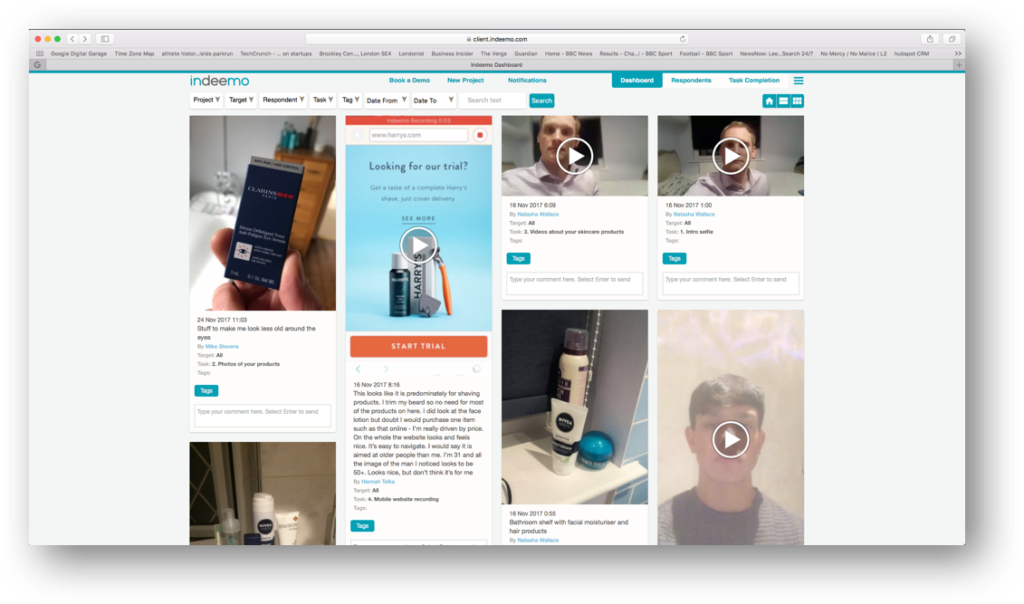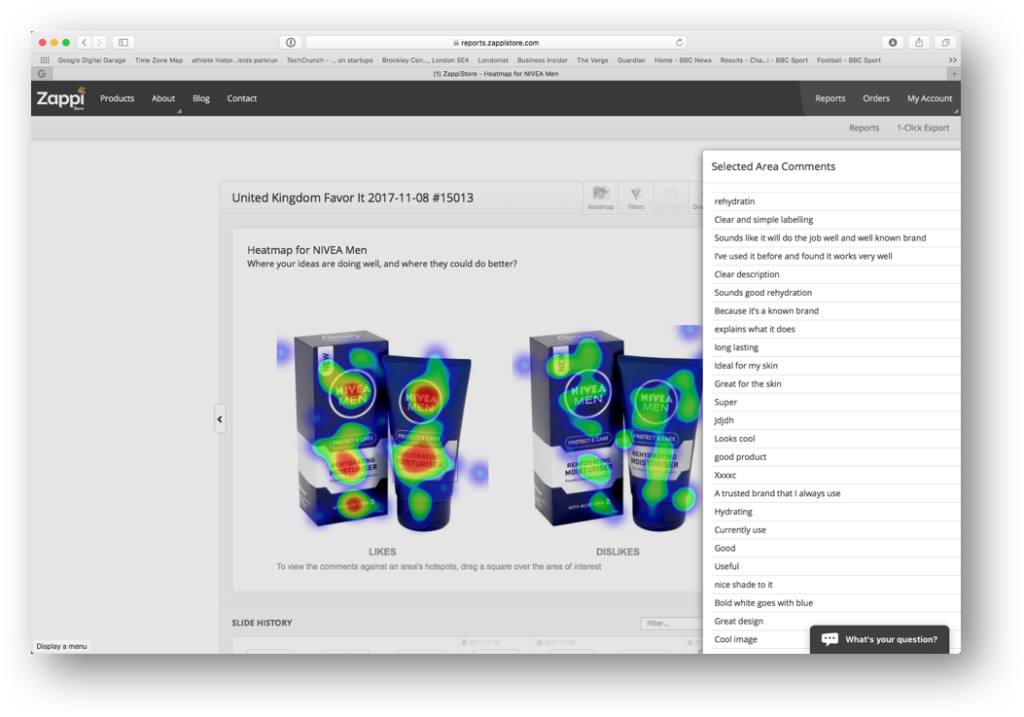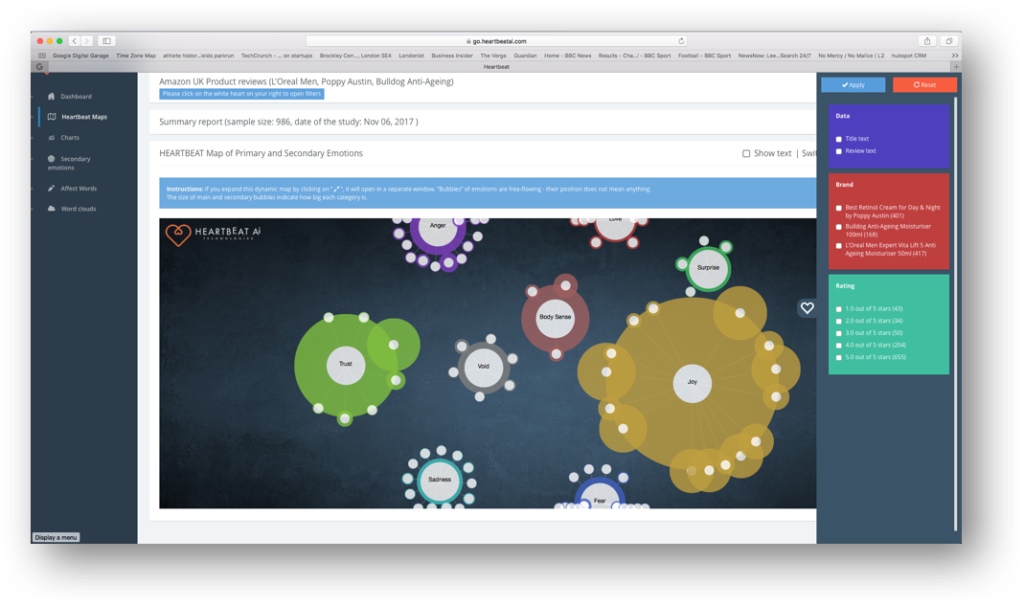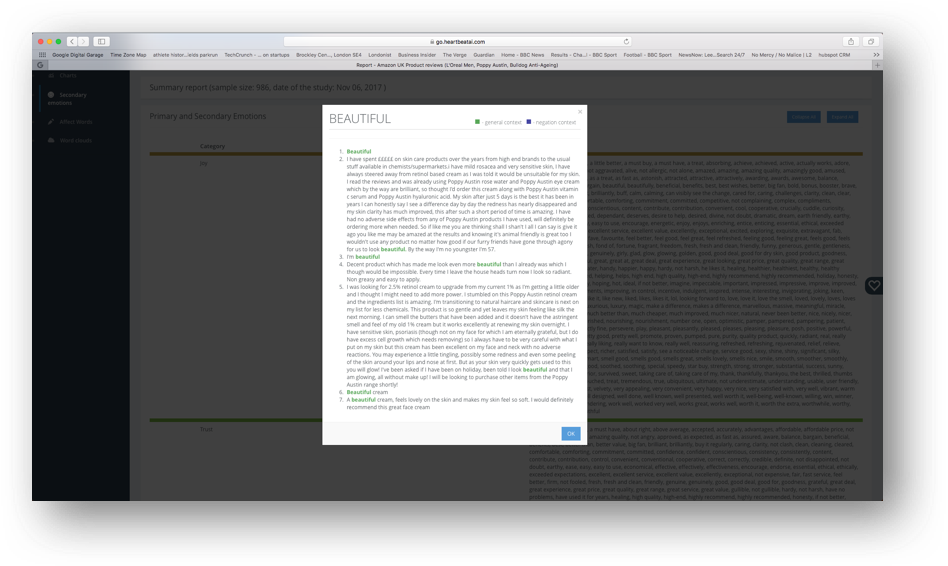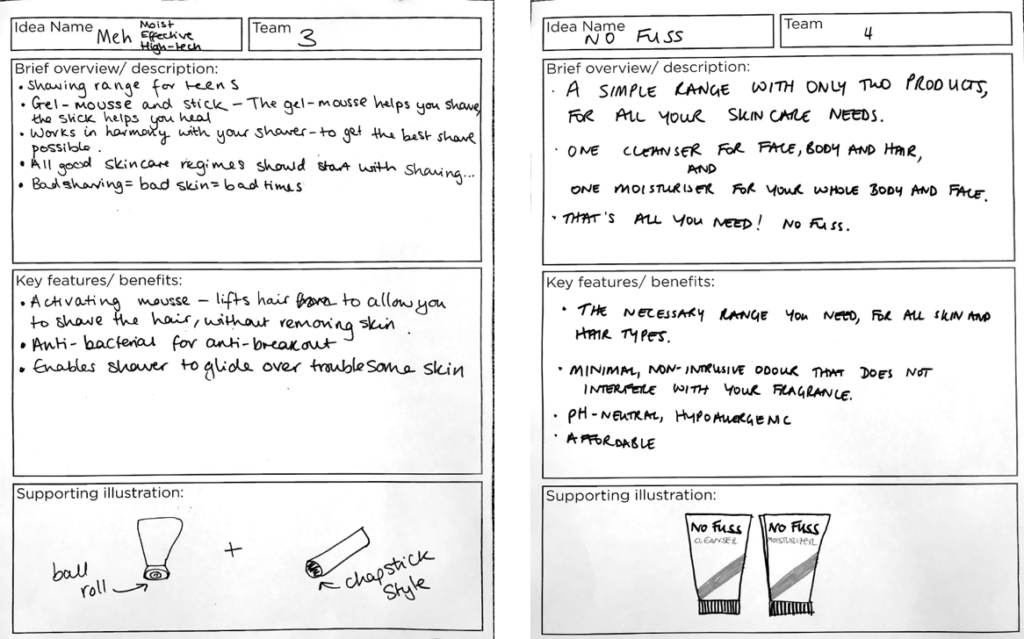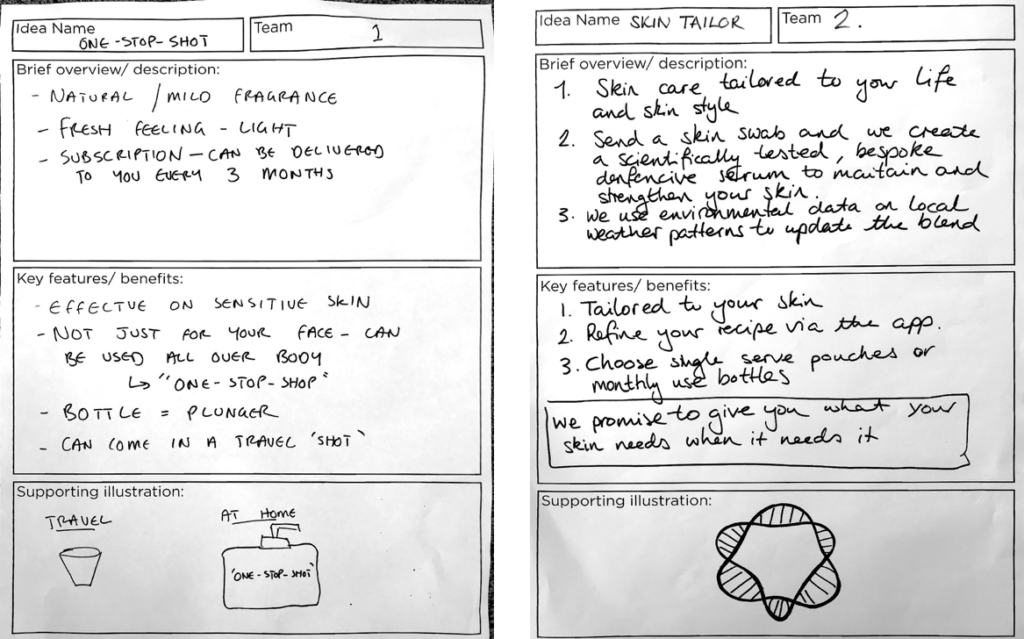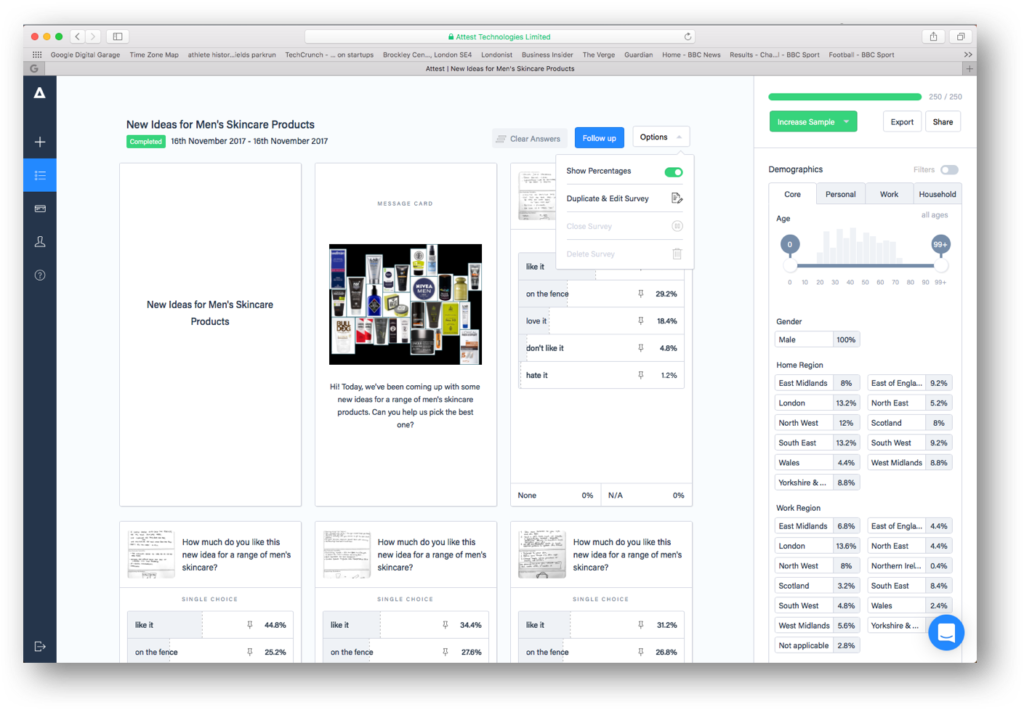A few months ago, I asked 30 innovation experts to spend half an hour creating ideas for a new range of men’s skincare products.
Not only did they do it – we got 4 workable concepts, all grounded in consumer insight – but an hour or so later, we knew which idea had the best potential, based on feedback from 250 men across the UK.
Sounds simple.
But you don’t know how much artists go through to make it look so easy.
That wasn’t me – that was Lauryn Hill, much maligned icon of the nineties.
Last week’s session was part of a training day I helped to run with colleagues from Paraffin.
We presented some approaches to lean consumer insight – tools and methods that help to avoid coming up with the next Colgate ready meal by …
- understanding people and categories
- stimulating productive ideation
- validating concepts with the target market
… all on the tightest budgets, in the shortest timescales, for the biggest impact.
If you don’t already know it, The Lean Startup is required reading for anyone who works around innovation.
If you want to pretend you’ve read it, there’s an excellent cheat sheet here.
Lean is not just about cost and speed (although they’re a big part of it).
It’s also about …
- The Minimal Viable Proposition – good enough today is better than perfect tomorrow – “If you are not embarrassed by the first version of your product, you’ve launched too late” (so said Reid Hoffman, Founder of LinkedIn)
- Build-Measure-Learn – try something, see how it works for customers (or doesn’t), tweak your approach and try it again – you’re in permanent beta these days
- The Five Whys – keep digging, like an annoying four-year-old, to figure out what’s really going on with users – ask in different ways and don’t be satisfied with the first four answers.
The Lean Movement is predicated on effective customer feedback; it also has lots to teach the research industry, and has inspired a wave of innovation in the tools we use.
In our workshop, we walked though some of these lean insight methods:
- Mobile ethnography apps that task participants with capturing images, photos or text observations as they go about their lives
- Digital user experience and site or app analytics tools
- Webcam based eye tracking and facial coding to measure unconscious responses to stimuli
- Free data sources for market understanding using tools like Facebook audience insights, Google Trends and Amazon Reviews
- Unstructured data analytics tools for decoding large volumes of text and patterns buried in images
- Online qualitative and community platforms
- Rapid mobile feedback tools and research automation software.
But to bring it to life properly, we needed to use some of these tools for a real scenario, both before and during the workshop – hence the men’s skincare idea.
Here’s what we did.
To enhance the sense of excitement and importance, I’m calling the date of the workshop itself T-day. They do it in films. It always sounds cool.
T MINUS 6 DAYS:
What cosmetic products are men using today, and what do they think of them?
We wanted rapid, contextual qualitative insight, and we used the indeemo smartphone (self) ethnography platform.
Our workshop participants were each sent a download link for the app, and asked to complete a handful of tasks (or find someone male to do it for them):
- photos of products they use now
- selfie videos talking about what they use and why
- narrated mobile screen capture of the harrys.co.uk website (razors by subscription)
The tool is largely self-service with help from indeemo project managers to set things up. You upload respondent details, fill out a task list and invite people to download the app. Other tools offer some similar features; we picked indeemo for its simplicity and the screen capture capability.
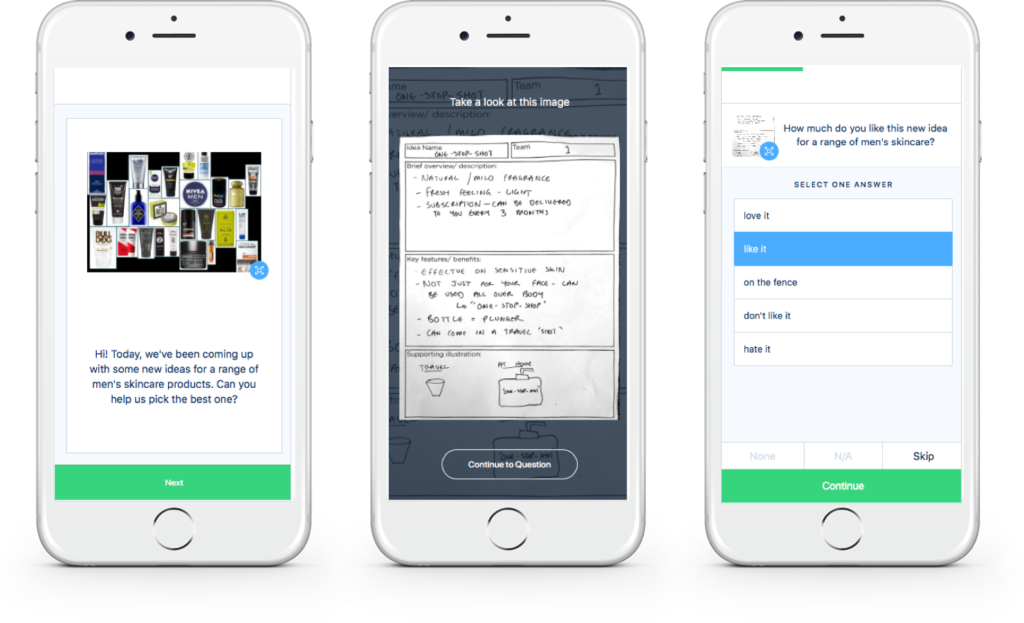 As content is submitted, it’s available instantly for analysis in the dashboard. Moderators can tag posts and message participants directly to ask questions about specific photos or videos.
As content is submitted, it’s available instantly for analysis in the dashboard. Moderators can tag posts and message participants directly to ask questions about specific photos or videos.
We sent this out on a Friday. Over the weekend we had dozens of posts from around twenty different people, and plenty of material to stimulate ideas in the following Thursday’s workshop.
T MINUS 3 DAYS:
What does the UK market landscape for men’s cosmetics look like?
For this, we wanted some quantitative understanding of the appeal and positioning of different skincare products.
We used the Zappistore automated research platform to do this, and tested consumer perceptions of 15 different items using their proprietary Favor It product.
Many of the tools on Zappistore use IP from research agencies like Millward Brown, System1 and BuzzBack. We chose Favor It because it’s simple.
And cheap, I’m not going to lie.
It’s actually a great way to get a quick sense of consumer preference for a bunch of different items.
The software is fully self-service: you configure the target sample you want (we just needed a good spread of men in the UK); choose any question attributes that need tailoring; confirm the cost and hit the button.
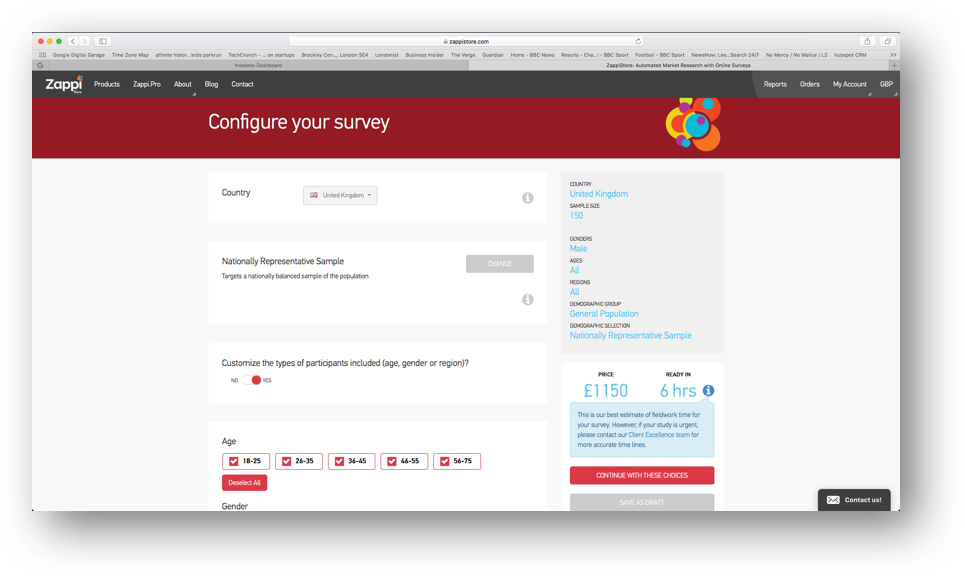 Respondents see five products; they rate the appeal of each one; they mark up product shots to show what they like or don’t like; they explain why; and then they pick from a list of brand attributes they associate with each image. We launched the study around 10am, and by the end of the day we had 450 completes and a full report to work with.
Respondents see five products; they rate the appeal of each one; they mark up product shots to show what they like or don’t like; they explain why; and then they pick from a list of brand attributes they associate with each image. We launched the study around 10am, and by the end of the day we had 450 completes and a full report to work with.
T MINUS 3 DAYS:
What emotions do men express when they talk about skincare products?
For this, we wanted insight into the underlying emotional drivers in the category to help stimulate some focused ideation.
We used Heartbeat AI, an emotion analytics platform that provides a structured breakdown of the emotional content in language.
The algorithm uses NLP and neuropsychology; the framework is a proprietary, standardised taxonomy of around 20,000 words that ladder up to 10 primary emotions and 100 secondary emotions.
It’s a SaaS solution – fully automated – that can ingest any kind of open text data (surveys, blogs, community posts etc). We used data from Amazon reviews of three different male skincare products, running the project at the same time as the Zappistore survey.
The dashboard reports helped us compare the emotional ‘profile’ of the different products, to explore category issues relating to anxiety and self-image, and to drill into individual comments for contextual understanding.
T MINUS 2 DAYS:
What features and benefits do men use when describing skincare products?
For this, we wanted to try another machine learning approach to categorisation and sentiment analysis of open-ended text, and we worked with Chattermill.
Chattermill is another hybrid solution: their data analysts help set up and train the models; reporting and analysis is via self-service dashboards. The platform is mainly used for on-going customer experience programmes, taking in text data from a range of sources (NPS trackers, review feedback, support tickets etc).
For this exercise, we fed it content from another set of Amazon reviews of another three men’s moisturisers.
Some initial work by the Chattermill team sets up the model to classify text into useful buckets (level of absorbedness, dry or sensitive skin type, smell, feel on skin etc) and sentiment is applied to each; review scores are also imported, along with other metadata such as price, pack size etc.
The analysis highlighted how one of the three products outperformed the other two on ‘break-outs’ and helped to focus one team’s ideation efforts around a proposition for teens.
T DAY!
In our workshop, the four innovation teams are briefed on the key findings from the projects. Armed with these insights, they spend around 30 minutes designing concepts that will shake the world of men’s skincare to its foundations.
But is there really a winning idea here? Which one should we take forward?
The final step in our lean insights workshop was to get some rapid validation from the market. For this, we used Attest, an integrated platform for rapid market feedback.
The software is fully self-service, and designed for use by non-specialists (marketers, product managers) as well as researchers. It is a mobile-only proposition, with its own respondent panel of smartphone app users; it can also plug in to other survey panels if needed.
At 12.30 on T-Day, we had the completed concepts ready to scan and upload into the Attest survey.
We launched it to men across the UK and within an hour we’d hit our target of 250. Results were available in the dashboard, which we then walked through with each of the teams.
And yes, there was a clear winner. But it would be unfair on One Stop Shot, Skin Tailor and Meh for me to reveal which one it was.
The Lean Movement has grown beyond its origins in software and technology startups: its principles are being adopted by innovation, marketing and customer experience teams in even the largest global corporates.
Insight & Analytics teams can play a critical role here – but many work with legacy tools that don’t support these lean models.

